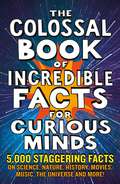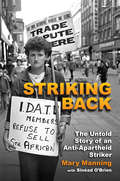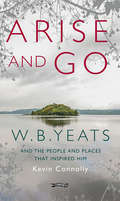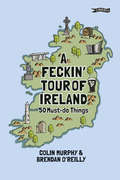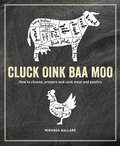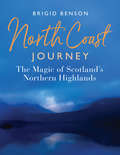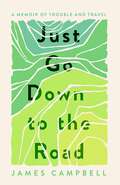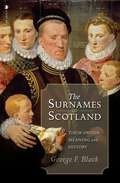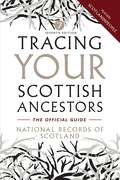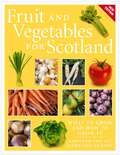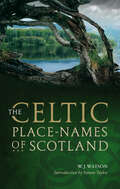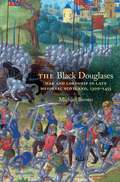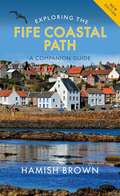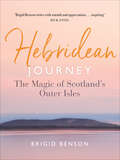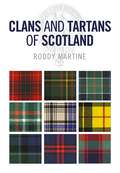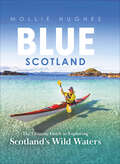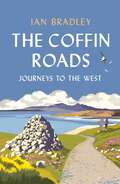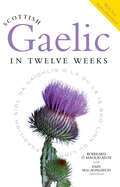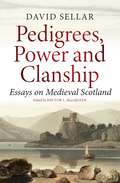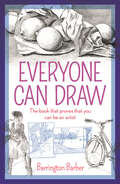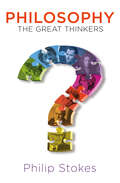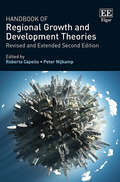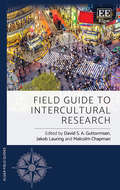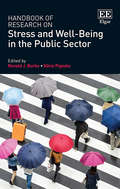- Table View
- List View
The Colossal Book of Incredible Facts for Curious Minds: 5,000 staggering facts on science, nature, history, movies, music, the universe and more!
by Nigel Henbest Simon Brew Sarah Tomley Ken Okona-Mensah Tom Parfitt Trevor Davies Chas Newkey-BurdenA polish bear in World War II rose to the rank of colonel.Penguins can't taste fish.The ashes of the man who invented the Pringles container are buried in one one.On Neptune it rains diamonds.'Hippopotomonstrosesquippedaliophobia' is the fear of long words. These are just 0.1% of all the facts in this incredible tome! Written by seven authors and covering subjects as diverse as The Universe, Art and Literature, The Natural World and Movies, The Colossal Book of Incredible Facts for Curious Minds is the ultimate trivia book! Why not amaze family and friends with the reasons pandas do handstands, the sinister source of the term 'rule of thumb', or that the patent for the fire hydrant was destroyed... in a fire. Every entry is weird, wonderful, inspiring and quite brilliantly, true!
Striking Back: The Untold Story of an Anti-Apartheid Striker
by Mary Manning Sinead O'Brien‘Young shopworkers on Henry Street in Dublin, who in 1984 refused to handle the fruits of apartheid, provided me with great hope during my years of imprisonment, and inspiration to millions of South Africans.’ Nelson Mandela Dunnes Stores cashier Mary Manning knew little about apartheid when, at the age of twenty-one, she refused to register the sale of two Outspan South African grapefruits under a directive from her union. She was suspended and nine of her co-workers walked out in support. They all assumed they would shortly return to work. But theirs were kindling voices, on the cusp of igniting a mass movement they couldn’t even imagine. Despite harassment from the Gardaí and disparagement from the Irish government and even the Catholic Church, they refused to be silenced. Within months they were embroiled in a dispute that captured the world’s attention. In this searing account, Mary tells the extraordinary story of their public fight for justice, as well as her emotive journey of discovery into her family’s past. Mary’s mother had been forced to carry a secret burden of shame for her whole life by the same oppressive establishment Mary was fighting. Striking Back is a provocative and inspiring story that epitomises the resilience of hope and the human spirit, even under the most formidable of circumstances. It shows that each of us has the power to change the world.
Arise And Go: W.B. Yeats and the people and places that inspired him
by Kevin ConnollyThe idea of place runs like a river through the life and works of the poet and playwright W.B. Yeats. This book focuses on his time in Dublin, London, Sligo and elsewhere in the west of Ireland, embracing the homes, landscapes and people that impacted his life and stimulated his vast body of work. Meet the poet’s father, the struggling artist John Butler Yeats; his mother Susan, the well-to-do Sligo girl who had no choice but to follow her husband’s path; his five siblings: Lily and Lolly, guiding lights in the Irish Arts and Crafts movement; Jack, the renowned painter; and Bobbie and Jane Grace, who died in infancy. Meet William Morris, John O’Leary, Katharine Tynan, George Moore, Oscar Wilde, Lady Gregory, Douglas Hyde, George Hyde-Lees, and, of course, Maud Gonne, as well as countless others who helped weave the cloth of Yeats’s poetic gift.
A Feckin' Tour of Ireland: 50 Must Do Things
by Colin MurphyThe Emerald Isle has something for everyone, from the stupendous coastline and cliffs of the Wild Atlantic Way in the west to the culture and cuisine of the Ancient East; from the castles and forts of the historic north to the famed golden beaches of the beautiful south – and not forgetting the mighty craic and decent watering holes to be found everywhere in between! Humorous information about 50 key tourist attractions in Ireland, accompanied by photographs and illustrations. A light-hearted guide of Ireland for natives and visitors alike. Featured destinations include: The Game of Thrones Tour The Giant’s Causeway Coastal Route Kilmainham Gaol Glasnevin Cemetery & Museum Newgrange, Knowth and Dowth Powerscourt House & Gardens King John’s Castle Irish National Stud & Gardens Yeats Country
Cluck, Oink, Baa, Moo
by Miranda BallardA comprehensive guide to buying and cooking beef, lamb, pork, chicken, turkey and game featuring 90 delicious recipes to enjoy – from flash-fried steaks to slow-cooked pulled pork and everything in-between.
North Coast Journey: The Magic of Scotland’s Northern Highlands - As seen on Jeremy Clarkson's 'Grand Tour'
by Brigid BensonThis is the essential guide to the north of Scotland, on a route which begins in Inverness, weaves westwards to Applecross and then northwards towards Torridon. From Ullapool it leads to the most northerly points in Britain, passing by Caithness and John o’ Groats before heading south again through Dingwall and to Inverness.In addition to stunning mountains, moors, lochs and beaches, the route also featuresexquisite towns and villages, castles, distilleries, breweries, natural wonders and wildlife.Brigid Benson, who knows the road intimately, divides the route into manageable chunks, suggesting where to discover history, observe wildlife, meet great local characters, shop at quirky stores, taste outstanding food, drink in friendly bars and cafes, stand in awe of amazing sights, and recommending places to picnic, swim, surf, walk and stargaze. And great places to camp and stay. She also draws attention to attention to potential pitfalls, offering useful advice on single-track roads, fuel, car problems, planning realistic itineraries, and much more.
Just Go Down to the Road: A Memoir of Trouble and Travel
by James Campbell'An enthralling and compulsively readable memoir: James Campbell is a marvelously charming teller of his improbable progress from high school dropout to literary critic and intellectual. There is no resisting the humour and modesty, the humanity and tenderness of his vivid account' - Phillip Lopate, author of To Show and to Tell: The Craft of Literary Nonfiction'So here I am to say what for many years I have wanted to say: that not only did I admire your book on James Baldwin extravagantly when I read it upon publication, it is one of those books that have remained alive in my heart and mind ever since . . . and you know how rare that is!' - Vivian Gornick, author of Unfinished Business: Notes of a Chronic Re-Reader'Baldwin's best biographer' - New York Times Book Review'When I first met Baldwin, he referred me to James Campbell as the man to talk to if I wished to know more about his life and work' - Caryl PhillipsThe story begins with Campbell, aged 14, in a police cell in Glasgow. He’s been charged with stealing books – five Mickey Spillane novels and a copy of Peyton Place. At 15, he became an apprentice printer, but gave that up in order to ‘go on the road’, fulfilling the only ambition he ever had while a pupil at King’s Park Secondary School in Glasgow – to be what RLS called ‘a bit of a vagabond’.On his hitchhiking journeys through Asia and North Africa, an interest in music, reading and writing grew. Campbell also took a keen interest in learning from interesting people. In 1972 he worked on a kibbutz, living in the neighbouring cabin to Peter Green, the founder and lead guitarist of Fleetwood Mac, with whom he formed a two-man musical combo. At the same time, he was part of a group of aspiring writers in Glasgow, including Tom Leonard. His literary heroes of the time were Alexander Trocchi and John Fowles: Campbell tracked them down to their homes and wrote extensively about both. The stories Campbell are recounted in this book.A crowning moment of his life was forming a friendship with the American writer James Baldwin. Campbell visited him more than once at his home in the South of France, and persuaded him to come to Edinburgh for the Book Festival in 1985. Campbell later wrote the acclaimed biography of Baldwin, Talking at the Gates.
Surnames of Scotland: Their Origin, Meaning and History
by George Fraser BlackFirst published by the New York Public Library in 1946, Black’s The Surnames of Scotland has long established itself as one of the great classics of genealogy. Arranged alphabetically, each entry contains a concise history of the family in question (with many cross-references), making it an indispensable tool for those researching their own family history, as well as readers with a general interest in Scottish history.An informative introduction and glossary also provide much useful information.
Tracing Your Scottish Ancestors: The Official Guide: 7th Edition
by National Records of ScotlandThis is a new edition of the bestselling guide to this increasingly popular pursuit. Scotland has the best-maintained records and facilities of any country in the world for undertaking family research, and now that the National Archives of Scotland are available online they can be consulted by anyone from whatever country.Tracing Your Scottish Ancestors is the National Archives' official guide and is written in an accessible style from the unique perspective of a custodian of the records. It details all the latest internet developments, including a chapter on family history on the web. It also points to more traditional resources, explaining step by step how to research records of births, marriages and wills.
Fruit and Vegetables for Scotland: What to Grow and How to Grow It
by Ken Cox Caroline BeatonFruit and vegetables have formed a fundamental part of the Scottish diet for thousands of years. This fascinating and practical book explores the history of fruit, vegetable and herb growing in Scotland, and provides a contemporary guide to the best techniques for growing produce, whether in a garden, allotment, patio or window box. Packed with hundreds of colour photographs, drawings and descriptive diagrams, this is a detailed and comprehensive bible for the gardener. In addition to advice on climate and soil conditions, it has contacts for organisations, specialist societies, nurseries and suppliers, as well as a detailed bibliography and list of useful websites.This is an essential reference book for anyone aiming to get the best possible results from their garden produce north of the border.
The Celtic Place-names of Scotland
by W. J. WatsonFirst published in 1926, this book remains the best and most comprehensive guide to the Celtic place-names of Scotland and is essential reading for anyone interested in Scottish history and the derivations of place-names the length and breadth of the country. It is divided into sections dealing with early names, territorial divisions, general surveys of areas, and also looks at saints, church terms and river names. As the standard reference work on the subject it has never been surpassed.This edition contains an introduction which includes biographical material about the author, together with corrigenda and addenda.
The Black Douglases: War and Lordship in Medieval Scotland 1300–1455
by Michael BrownDuring the century and a half of their power the Black Douglases earned fame as Scotland’s champions in the front line of war against England. On their shields they bore the bloody heart of Robert Bruce, the symbol of their claim to be the physical protectors of the hero-king’s legacy. But others saw the power of these lords and earls of Douglas in a different light. To their critics the Douglases were a force for disorder in the kingdom, lawless, arrogant and violent, whose power rested on coercion and whose defiance of kings and guardians ultimately provoked James II into slaying the Douglas earl with his own hand.Michael Brown analyses the rise and fall of this family as the dominant magnates of the south, from the deeds of the Good Sir James Douglas in the service of Bruce to the violent destruction of the Douglas earls in the 1450s. Alongside this study of the accumulation and loss of power by one of the great noble houses, The Black Douglases includes a series of thematic examinations of the nature of aristocratic power. In particular these emphasise the link between warfare and political power in southern Scotland during the fourteenth century. For the Black Douglases, war was not just a patriotic duty but the means to power and fame in Scotland and across Europe.
Exploring the Fife Coastal Path: A Companion Guide
by Hamish BrownThis is the ideal guide to the whole route, so rich in history and natural beauty. Designed to be used by walkers on the Path or visitors to any point along it, it introduces a wealth of castles, churches, harbours, monuments and red-roofed houses.Hamish Brown gives practical advice on all aspects of walking the Path, whether you are making a seven-day trip along its whole length or walking a short section on a Sunday afternoon. Revising his earlier guide to the route, he explores every part of the Fife coast, including the famous Forth bridges, the charming East Neuk fishing villages of Pittenweem, Elie and St Monans, as well as Anstruther, Crail and St Andrews. Along the way he provides a mass of fascinating information about people and places that can be read for pleasure and kept as the souvenir of a unique and unforgettable part of Scotland.
Hebridean Journey: The Magic of Scotland’s Outer Isles
by Brigid BensonWashed by the surging waves of the Atlantic Ocean, the island chain of the Outer Hebrides lies at the very edge of Europe. This richly illustrated book is a fabulous invitation to discover the distinct character of each of the islands, covering Lewis and Harris, Berneray, Grimsay, North Uist, Benbecula, South Uist, Eriskay, Barra and Vatersay, and the vibrant Gaelic culture of the islanders.From white shell sands, peaty moors and gnarly mountains to heather hills, sea-green lochs and mysterious ancient monuments, these are places of unrivalled beauty which are also home to a huge variety of wildlife on land, at sea and in the air – otters, red deer, orca, dolphins, sea eagles, grey seals and corncrake, to name but a few.Packed with outstanding experiences, fascinating insights, hidden gems and helpful information, Hebridean Journey creates the uplifting opportunity of meaningful travels and life affirming experiences in the unique magic of Scotland’s Atlantic islands.
Clans and Tartans of Scotland
by Roddy MartineThroughout the world there exists an enduring fascination with our ancestry – who we are and where we come from. Nowhere is this more evident than with the generations of Scots who over the centuries have left their native Scotland to create a new life in the New World – North America, Canada, Australia, New Zealand and Europe.The Scots are a remarkable race with a justifiably proud history and culture which they have successfully passed on through generations. This compact book sets out to identify the larger Scottish clan and family names, their tartans, septs (dependent family names), heraldic crests, mottos, ancestral lands and allegiances.This book features full colour photographs of each tartan as opposed to digital reproductions, allowing readers to see both the textures and patterns.
Blue Scotland: The Ultimate Guide to Exploring Scotland's Wild Waters
by Mollie HughesScotland is famed for its rugged coastlines, pristine beaches, endless rivers and deep lochs. From the Highlands to the Islands, from the east coast to the west coast, the whole country is an unreported mecca for wild water sports.Mollie Hughes has tried and tested numerous locations throughout the country and introduces 80 of them in this book. As well as practical details on all aspects of the locations, she also includes her own personal experiences and tips, enabling wild water sports enthusiasts of all levels of experience to make the most of the amazing opportunities Scotland offers.
The Coffin Roads: Journeys to the West
by Ian Bradley'Coffin roads' along which bodies were carried for burial are a marked feature of the landscape of the Scottish Highlands and islands – many are now popular walking and cycling routes. This book journeys along eight coffin roads to discover and explore the distinctive traditions, beliefs and practices around dying, death and mourning in the communities which created and used them.The result is a fascinating snapshot into place and culture. After more than a century when death was very much a taboo subject, this book argues that aspects of the distinctive West Highland and Hebridean way of death and approach to dying and mourning may have something helpful and important to offer to us today.
Scottish Gaelic in Twelve Weeks: With Free Audio Download
by Roibeard Ó Maolalaigh Iain MacAonghuisScottish Gaelic in Twelve Weeks has been written both as a self-tuition course for beginners and also for use within the classroom. You may want to learn Gaelic because of a general interest in Celtic or Scottish history and culture, or because it was the everyday language of your ancestors. The cynical observer may wonder if the exercise is worthwhile, when only 1.5 per cent of Scotland’s population speak the language.However, Gaelic is far from dead; in some parts of the Highlands and Western Isles it is the everyday language and it represents an important part of the United Kingdom’s cultural mix. There are Gaelic-learning classes in almost every area of Scotland. Each lesson in the book contains some essential points of grammar explained and illustrated, exercises, a list of new vocabulary (with a guide to pronunciation, using the International Phonetics Alphabet), and an item of conversation.
Everyone Can Draw
by Barrington BarberBarrington Barber takes as his starting point the belief that everyone - whatever their experience - can learn to draw well.In this book, after introducing different drawing materials and mark making, he goes on to show how line, tone and proportion can be used to create convincing, realistic drawings. Exercises are set out in easy steps so the drawing process is clear for all to follow.Tuition in essential drawing techniques is accompanied by explanations of practical processes such as copying, tracing and measuring, as well as how to use photographs as the basis of drawing.Fresh and accessible, this book will appeal to those who are interested in learning to draw, or who wish to hone their existing skills in this most dynamic and rewarding of activities.
Drawing Cats: A Step-by-Step Guide for Artists
by Aimee WillsherNo two cats are the same. That's what makes them such intriguing and challenging subjects to draw. From the thick, luxurious coat of a Maine Coon, to the short round face of a Burmese, our feline friends are full of variety and this drawing book will help you capture these distinctions. Award winning artist Aimee Willsher introduces a range of techniques you need to draw domestic and wild cats effectively. Starting by exploring the their generic form, using simple, easy-to-master shapes and techniques, she then progress to capturing their expressions, the way they move, and their interactions with other creatures as well as the outside world.By the end you will have a means of engaging with these inspiring subjects in a unique way, enabling you to create beautiful drawings that will preserve memories of the treasured felines in your life forever.
Philosophy: The Great Thinkers
by Philip Stokes'It is the mark of an educated mind to be able to entertain a thought without accepting it.' - Aristotle This illustrated guide showcases the major philosophers of the western tradition. Concise and informative, it provides an ideal introduction to their lives, ideas and the effect those ideas have had on the wider world. Both easy-to-use and a stimulating read, this book is an ideal reference for anybody interested in philosophy, and especially for those who want a clear, entertaining exposition of the ideas that shape the way we think. Key features: • A-Z format, covering the ideas of many of history's most influential thinkers, from Aristotle and Cicero to controversial contemporary philosophers such as Peter Singer and Jacques Derrida • At-a-glance summaries of the major works of each philosopher featured • Fully illustrated
Handbook of Regional Growth and Development Theories: Revised and Extended Second Edition
by Peter Nijkamp Roberta CapelloIn recent years, economic crises, regional fragmentation trends, radical technological innovation and the failures of regional policies have expanded the knowledge horizon of experts in regional growth and development. This fully updated, revised and expanded Second Edition contains ten new chapters as well as exploring theories prevalent in the first edition in the face of recent changes in the field. With 30 chapters from leading experts from across the globe, this Handbook looks at new pathways in regional economics, presenting the most cutting-edge theories explaining regional growth and local development. It thoroughly examines recent advances in theories, the normative potentialities that they have and the cross-fertilization of ideas between regional and mainstream economists, providing crucial insights to the topic. This will be an essential source of reference and information for scholars and advanced students of regional science and regional economics. It will also be a useful tool for experts in international institutions researching regional growth.
Field Guide to Intercultural Research (Elgar Field Guides)
This informative Field Guide to Intercultural Research is specifically designed to be used in the field, guiding the reader away from pitfalls and towards best practice. It shares valuable fieldwork challenges and experiences, as well as insights into key methodological debates and practical recommendations relevant to both new and seasoned researchers. Offering an international outlook and featuring insights from across four continents, this invaluable guide introduces new methods and approaches to data analysis, tackling various research phases, including perspectives from quantitative researchers. It focuses on the role of culture and the intercultural challenges that fieldworkers encounter, enticing readers into further conversations concerning the role of fieldwork in producing new knowledge. Expert contributors illustrate the benefits of field research in intercultural research not only to academic literature, but also to organizational policies and the societies within which we work and live. Including insights from the fields of ethnography and social anthropology, this cutting edge guide is crucial reading for all students and researchers of business and management studies as well as organizational development hoping to begin their foray into fieldwork, as well as experienced scholars looking for new approaches to field research. It will also benefit management professionals and consultants in need of an expanded knowledge base for conducting action research or other interventions in organizations.
Handbook of Research on Stress and Well-Being in the Public Sector (Research Handbooks in Business and Management series)
by Ronald J. Burke Silvia PignataThis timely Handbook addresses the concepts of stress and well-being among workers in various public sector roles and occupations across the globe. Emphasizing the importance of well-being and stress prevention initiatives in ever-changing workplace environments, this Handbook highlights successful organizational initiatives and provides insight into best practice for promoting healthy employees and workplaces. Chapters analyze the new and ongoing challenges public sector organizations face such as: cost cutting, pressures to improve performance, changes in societal and workplace demographics, and increasing levels of stress and strain amongst their employees. This wide-ranging Handbook utilizes empirical research, literature reviews and case studies to draw greater attention to these and other challenges. Containing contributions from leading international experts in their respective fields, the contributors hope that this multidisciplinary Handbook will help to enhance the health and well-being of public sector employees and the sector’s performance and contribution to society. The Handbook of Research on Stress and Well-Being in the Public Sector will be of value to researchers and practitioners interested in the public sector and both individual and organizational health and performance. This will also be a key resource for public sector and government professionals responsible for human resource management and work and health.
